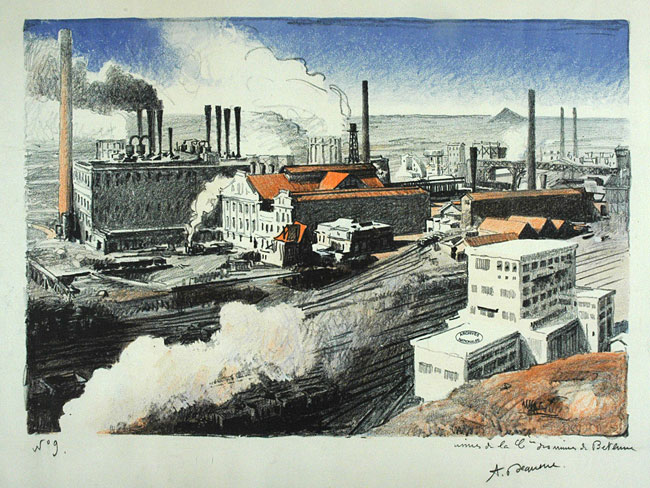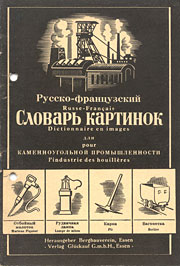Coal has marked various centuries of industrial and commercial history, in particular the XIXth and XXth centuries. This exhibition presents for the first time documents from 1773 to 1998. They all come exclusively from the funds of the Archives nationales du monde du travail kept in Roubaix, and refer to all the coal basins in France.
From the coal miner's survival to that of the coal mines
Coal symbolises all at once danger and fear, development and social progress. The mine is the embodiment of the population movement from the countryside to the town, then from abroad to France, with the Company bosses going there to fetch the workforce needed to develop the sites. It calls to mind dramas - natural or economic catastrophes - in which man fills the main role in death at work and in the fights and strikes, from the miner's survival to the survival of the mines. We are also presented with the technical and scientific capacities put to work to exploit a resource that was indispensable for a long time. The mine mobilized the political and social world for over two centuries: Jaurès and the miners from Carmaux, Maurice Thorez and the battle of production, Mitterrand and the miners from Liévin... It also mobilised the arts; in the 1960s for example, when Marguerite Duras went to read literary texts - that were not hers - to the miners of the North-Pas-de-Calais region and spoke with them of literature.
The greatest concentration of archives on mines
When the basins started progressively closing in the 1960s, and even though the law on archives then protected mine funds, many documents disappeared. It has even been reported that certain shafts that were no longer operating were filled in by the Administration with the archives on site. In spite of this difficult context, the national Archives regularly collected numerous funds. The series kept at the Archives nationales du monde du travail (National archives of the labor world) undoubtedly represent the greatest concentration of existing archives on the mines in France: over more than 3 kilometres, 37 funds representing all the basins in France, and 32 corporate funds directly attached to the mines, not to mention the funds from the private railroad companies that also participate directly in the French mining development. The most far-reaching safeguard is taking place right now with the archiving at the Archives nationales du monde du travail of the Charbonnages de France files that will close at the end of 2007.
Themes and actors of the mine
A lot has been written about the mine and miners. The aim of this exhibition is not to retrace a detailed history of mines and miners, but rather to shed light on a great number of documents taken out of the reserves and to put them side by side in significant and unusual sequences that simple consultation do not allow. Over 400 archives are presented simultaneously. This wide panorama, organised over 900 m2, gives way to a number of questions on the themes and actors of the mine: Who is the owner? How does one buy a mine? What are the machines at the bottom of the pit? How do the miners work? Where are the mines in France? What catastrophes do we remember? Why do we close down mines that are at the summit of technical progress? What did the miners' strikes get them or all of us? The exhibition translates the nature of the archive funds: dossiers, correspondence, printed papers, cards, drawings, reports, accounting registrars, posters, photos, sound recordings, films... Each sequence is organised in a chronological manner to follow the evolutions over two centuries and allow us the best pedagogical approach possible.
Illustration Mines de Noeux Vicoigne (Pas-de-Calais): Illustrated Russian-French dictionary for the mining industry, s. d. [1942-1945]: illustrated brochure, front cover. Archives nationales du monde du travail (1994 051).
| 








